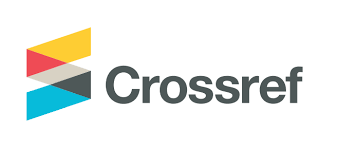Bullying e saúde mental de estudantes do ensino fundamental e médio
revisão da literatura
DOI:
https://doi.org/10.47456/rbps.v27isupl_1.48255Palavras-chave:
Bullying, Saúde mental, Estudantes, Ensino fundamental, Ensino médioResumo
Introdução: Bullying é uma violência entre pares, com desequilíbrio de poder ou força, em que um agressor, sem motivação aparente, age intencional e repetitivamente ao longo do tempo, causando danos ou sofrimento à vítima. Estima-se que, no Brasil, cerca de 25% dos estudantes do ensino fundamental e médio estejam envolvidos com bullying, na condição de vítima ou de agressor. Objetivos: Analisar a produção científica sobre as relações entre bullying e saúde mental de estudantes do ensino fundamental e médio, no contexto educacional brasileiro. Métodos: Consultaram-se três das principais bases de dados no país. Utilizando-se os descritores bullying AND escola AND saúde mental, encontraram-se 261 títulos potencialmente relevantes. Após a aplicação dos critérios de inclusão e exclusão, 24 artigos compuseram o corpus desta pesquisa. Estes artigos foram analisados por meio da análise de conteúdo. Resultados: Os artigos demonstraram que o bullying escolar impacta significativamente a saúde mental de todos os envolvidos, gerando uma ampla gama de emoções e sentimentos negativos, assim como contribuindo para o surgimento e/ou agravamento de diversos transtornos mentais. Eles igualmente demonstraram que o bullying deve ser investigado e prevenido não somente no contexto escolar, mas também no ambiente familiar. Conclusão: Ressalta-se a necessidade de se promover a saúde e o cuidado dos estudantes envolvidos com bullying, sobretudo porque são sujeitos em desenvolvimento biopsicossocial. É de extrema relevância que sejam implementadas e fortalecidas políticas públicas intersetoriais, especialmente nos setores da saúde e educação, em colaboração com o Sistema de Garantia de Direitos da Criança e do Adolescente.
Downloads
Referências
Isolan L. Bullying escolar na infância e adolescência. Rev Bras Psicoter. 2014;16(1):68-85. Disponível em: https://cdn.publisher.gn1.link/rbp.celg.org.br/pdf/v16n1a07.pdf
Cano-Echeverri MM, Vargas-Gonzáles JE. Actores del acoso escolar. Rev Méd Rivaralda. 2018;23(1):61-63. Disponível em: http://www.scielo.org.co/pdf/rmri/v24n1/v24n1a11.pdf
Olweus D. Bullying at School: Basic Facts and Effects of a School Based Intervention Program. Child Psychol Psychiatry. 1994;35(7):1171-90.
Hellfeldt K, López-Romero L, Andershed H. Cyberbullying and Psychological Well-being in Young Adolescence: The Potential Protective Mediation Effects of Social Support from Family, Friends, and Teachers. Int J Environ Res Public Health. 2019;17(1):45. Disponível em: doi:13390/ijerph17010045.
Bannink R, Broeren S, Van de Looij-Jansen PM, De Waart FG, Raat H. Cyber and Traditional Bullying Victimization as a Risk Factor for Mental Health Problems and Suicidal Ideation in Adolescents. PLoS ONE. 2014;9(4):e94026.
Barboza GE, Schiamberg LB, Oehmke J, Korzeniewski SJ, Post LA, Heraux CG. Individual Characteristics and the Multiple Contexts of Adolescent Bullying: An Ecological Perspective. J Youth Adolescence. 2009;38(1):101-21.
Espelage DL. Ecological Theory: Preventing Youth Bullying, Aggression, and Victimization. Theory Into Practice. 2014;53(4):257-64. Doi: 10.1080/00405841.2014.947216.
Napolitano SMS, Espelage DL. Expanding the Social-Ecological Framework of Bullying among Youth: Lessons Learned from the Past and Directions for the Future. In: Espelage DL, Napolitano SMS, eds. Bullying in North American Schools. 2nd ed. Disponível em: http://digitalcommons.unl.edu/edpsychpapers/140.
Swearer SM, Doll B. Bullying in Schools: An Ecological Framework. J Emotional Abuse. 2001;2(2–3):7–23. Disponível em: https://doi.org/10.1300/J135v02n02_02.
Alcantara SC, González-Carrasco M, Montserrat C, Viñas F, Casas F, Abreu DP. Peer violence in the School Environment and Its Relationship with Subjective Well-Being and Perceived Social Support Among Children and Adolescents in Northeastern Brazil. J Happiness Stud. 2017;18(5):1507–32.
Reisen A, Viana MC, Santos-Neto ETD. Bullying among adolescents: are the victims also perpetrators? Braz J Psychiatry. 2019;41(6):518–29.
Malta DC, Mello FCMD, Prado RRD, Sá ACMGND, Marinho F, Pinto IV, et al. Prevalência de bullying e fatores associados em escolares brasileiros, 2015. Ciênc saúde coletiva. 2019;24(4):1359–68.
Oliveira WAD, Silva JL, Fernandez JER, Santos MAD, Caravita SCS, Silva MAI. Family interactions and the involvement of adolescents in bullying situations from a bioecological perspective. Estud psicol (Campinas). 2020;37:e180094.
Oliveira WA, Silva JB, Querino RA, Caravita SCS, Silva MAI. Family variables and bullying among Brazilian adolescents: a mixed study. Behavioral Psychology. 2019;27(1):41-53.
Reisen A, Leite FMC, Santos Neto ETD. Associação entre capital social e bullying em adolescentes de 15 a 19 anos: relações entre o ambiente escolar e social. Ciênc saúde coletiva. 2021;26(suppl 3):4919–32. Doi: 10.1590/1413-81232.0212611.3.21522019.
Malta DC, Oliveira WAD, Prates EJS, Mello FCMD, Moutinho CDS, Silva MAI. Bullying entre adolescentes brasileiros: evidências das Pesquisas Nacionais de Saúde do Escolar, Brasil, 2015 e 2019. Rev Latino-Am Enfermagem. 2022;30(spe):e3679.
Menesini E, Salmivalli C. Bullying in schools: the state of knowledge and effective interventions. Psychol Health Med. 2017;22(sup1):240–53.
Garaigordobil M, Mollo-Torrico JP, Larrain E. Prevalencia de Bullying y Cyberbullying en Latinoamérica: una revisión. RIP. 2019;11(3):1–18.
Mello FCM, Malta DC, Santos MG, Silva MMAD, Silva MAI. Evolução do relato de sofrer bullying entre escolares brasileiros: Pesquisa Nacional de Saúde do Escolar - 2009 a 2015. Rev bras epidemiol. 2018;21(suppl 1):e180015.
Nuñez-Fadda SM, Castro-Castañeda R, Vargas-Jiménez E, Musitu-Ochoa G, Callejas-Jerónimo JE. Bullying Victimization among Mexican Adolescents: Psychosocial Differences from an Ecological Approach. IJERPH. 2020;17(13):4831. Disponível em: https://doi.org/10.3390/ijerph17134831.
Strohmeier D, Gradinger P, Yanagida T. The Role of Intrapersonal-, Interpersonal-, Family-, and School-Level Variables in Predicting Bias-Based Cybervictimization. J Early Adolesc. 2022;42(9):1175–203. Disponível em: https://doi.org/10.1177/02724316211010335
Prodócimo E, Cerezo F, Arense JJ. Acoso escolar: Variables sociofamiliares como factores de riesgo o de protección. Rev Psicol Conductual/ Behav Psychol. 2014;22(2):343–57.
Oliveira WA, Silva MAI, Silva JL, Mello FCDM, Prado RRD, Malta DC. Associations between the practice of bullying and individual and contextual variables from the aggressors’ perspective. J Pediatr. 2016;92(1):32–9. Doi: 10.1016/j.jped.2015.04.00.
Gomes A, Costa Martins M, Silva B, Ferreira E, Nunes O, Castro Caldas A. How Different are Girls and Boys as Bullies and Victims? Comparative Perspectives on Gender and Age in the Bullying Dynamics. IJEP. 2022;11(3):237–60. Disponível em: doi: 10.17583/ijep.9310.
Silva CSE, Costa BLD. Opressão nas escolas: o bullying entre estudantes do ensino básico. Cad Pesqui. 2016;46(161):638–63. Doi: 10.1590/198053143888.
Sampaio JMC, Santos GV, Oliveira WAD, Silva JLD, Medeiros M, Silva MAI. Emotions of students involved in cases of bullying. Texto contexto - enferm. 2015;24(2):344–52. Disponível em: https://doi.org/10.1590/0104-07072015003430013
Orellana VDSQ, Souza GP, Leivas PHS. Impacto do bullying na performance escolar. RAE. 2022;40(81). Disponível em: https://seer.ufrgs.br/index.php/AnaliseEconomica/article/view/93726
Silva GRRE, Lima MLCD, Acioli RML, Barreira AK. A influência da violência familiar e entre pares na prática do bullying por adolescentes escolares. Ciênc saúde coletiva. 2021;26(suppl 3):4933–43.
Oliveira WAD, Silva JLD, Braga IF, Romualdo C, Caravita SCS, Silva MAI. Modos de explicar o bullying: análise dimensional das concepções de adolescentes. Ciênc saúde coletiva. 2018;23(3):751–61.
Silva JLD, Oliveira WAD, Mello FCDM, Prado RRD, Silva MAI, Malta DC. Prevalência da prática de bullying referida por estudantes brasileiros: dados da Pesquisa Nacional de Saúde do Escolar, 2015. Epidemiol Serv Saúde. 2019;28(2). Disponível em: http://www.scielo.br/scielo.php?script=sci_arttext&pid=S2237-96222019000200304&lng=pt&nrm=iso
Alcantara SCD, González-Carrasco M, Montserrat C, Casas F, Viñas-Poch F, Abreu DPD. Violência entre pares, clima escolar e contextos de desenvolvimento: suas implicações no bem-estar. Ciênc saúde coletiva. 2019;24(2):509-22. Disponível em: https://doi.org/10.1590/1413-81232018242.01302017
Oliveira WAD, Silva MAI, Silva JLD, Carlos DM, Pereira B, Santos MAD. Implications of School Bullying Victimization in Mental Health: Qualitative Evidence. Psico-USF. 2021;26(4):673–84. Disponível em: https://doi.org/10.1590/1413-82712021260406
World Health Organization (WHO). Inequalities young people’s health: key findings from the Health Behaviour in School-aged Children (HBSC) 2005/2006 survey fact sheet. Copenhague: WHO, 2008. Disponível em: http://www.euro.who.int/__data/assets/pdf_file/0004/83695/fs_hbsc_17june2008_e.pdf
UNICEF. Pesquisa do UNICEF: Mais de um terço dos jovens em 30 países relatam ser vítimas de bullying online. 2019. Disponível em: https://www.unicef.org/brazil/comunicados-de-imprensa/mais-de-um-terco-dos-jovens-em-30-paises-relatam-ser-vitimas-bullying-online#:~:text=Pesquisa%20do%20UNICEF:%20Mais%20de,ser%20v%C3%ADtimas%20de%20bullying%20online
Tricco AC, Lillie E, Zarin W, O’Brien KK, Colquhoun H, Levac D, et al. PRISMA Extension for Scoping Reviews (PRISMA-ScR): Checklist and Explanation. Ann Intern Med. 2018;169(7):467-73. Disponível em: https://doi.org/10.7326/M18-0850
Bardin L. Análise de Conteúdo. Ed. 70. Lisboa: 2011.
Vala J. A análise de conteúdo. In: Silva AS, Pinto JM, eds. Metodologia das ciências sociais. Porto: Afrontamento; 1986. p. 101-28.
Cruzeiro ALS, Silva RAD, Horta BL, Souza LDDM, Faria AD, Pinheiro RT, et al. Prevalência e fatores associados ao transtorno da conduta entre adolescentes: um estudo de base populacional. Cad Saúde Pública. 2008;24(9):2013-20.
Oliveira ASD, Antonio PDS. Sentimentos do adolescente relacionados ao fenômeno bullying: possibilidades para a assistência de enfermagem nesse contexto. Rev Eletr Enf [Internet]. 2006 [citado 2025 mar 18];8(1). Disponível em: http://www.revistas.ufg.br/index.php/fen/article/view/946
Andrade SSCDA, Yokota RTDC, Sá NNBD, Silva MMAD, Araújo WND, Mascarenhas MDM, et al. Relação entre violência física, consumo de álcool e outras drogas e bullying entre adolescentes escolares brasileiros. Cad Saúde Pública. 2012 set;28(9):1725-36.
Bottino SMB, Bottino CMC, Regina CG, Correia AVL, Ribeiro WS. Cyberbullying and adolescent mental health: systematic review. Cad Saúde Pública. 2015 mar;31(3):463-75.
Costa MRD, Xavier CC, Andrade ACDS, Proietti FA, Caiaffa WT. Bullying among adolescents in a Brazilian urban center – “Health in Beagá” study. Rev Saúde Pública. 2015;49(0):1-10.
Malta DC, Porto DL, Crespo CD, Silva MMA, Andrade SSCD, Mello FCMD, et al. Bullying in Brazilian school children: analysis of the National Adolescent School-based Health Survey (PeNSE 2012). Rev Bras Epidemiol. 2014;17(suppl 1):92-105.
Silva RAD, Cardoso TDA, Jansen K, Souza LDDM, Godoy RV, Cruzeiro ALS, et al. Bullying and associated factors in adolescents aged 11 to 15 years. Trends Psychiatry Psychother. 2012;34(1):19-24.
Brêtas JRDS, Moraes SPD. Preconceito e bullying no ambiente escolar. RevEducacao. 2020 mar 21;15(1):147.
Freire KBA. Sentimentos de adolescentes vítimas de violência escolar. Rev Saúde Col UEFS. 2018;8:89-94.
Garbin CAS, Teruel GP, Costa AA, Saliba TA, Garbin AJI. Bullying and its correlation with the quality of life of adolescents. Rev Ciênc Plural. 2019 nov 12;5(3):40-53.
Leopoldino ER, Santos LAM, Caminha IO. Educação e fenomenologia: a percepção de adolescentes acerca do bullying na escola. Revtee. 2020 jul 22;13(32):1-22.
Mello FCM, Malta DC, Prado RRD, Farias MS, Alencastro LCDS, Silva MAI. Bullying e fatores associados em adolescentes da Região Sudeste segundo a Pesquisa Nacional de Saúde do Escolar. Rev Bras Epidemiol. 2016 dez;19(4):866-77.
Mello FCM, Silva JLD, Oliveira WAD, Prado RRD, Malta DC, Silva MAI. A prática de bullying entre escolares brasileiros e fatores associados, Pesquisa Nacional de Saúde do Escolar 2015. Ciênc Saúde Coletiva. 2017 set;22(9):2939-48.
Reisen A, Viana MC, Dos Santos Neto ET. Adverse childhood experiences and bullying in late adolescence in a metropolitan region of Brazil. Child Abuse Negl. 2019 jun;92:146-56. Doi:10.1590/1516-4446-2018-0246.
Silva VG, Toazza K. Bullying no ambiente escolar: um relato de adolescentes. Professare. 2023;12(2). Doi: https://doi.org/10.33362/professare.v12i2.3007.
Jomar RT, Fonseca VAO, Ramos DO. Effects of sexual orientation-based bullying on feelings of loneliness and sleeping difficulty among Brazilian middle school students. J Pediatr (Rio J). 2021;97(2):233-41.
Lembo VMR, Santos MAD, Feijó MCB, Andrade ALM, Zequinão MA, Oliveira WAD. Revisão sobre características de meninos e meninas que praticam bullying escolar. Psicol Teor Pesq [Internet]. 2023 [citado 2025 mar 18];25(3). Disponível em: https://editorarevistas.mackenzie.br/index.php/ptp/article/view/15019/11892.
Neves RC, Amparo DMD, Roques M, Cardoso BCC. Bullying on adolescence: psychological assessment with projective methods (Paris School). Psicol Teor Pesq. 2023;39:e39402.
Reisen A, Gomes DR, Viana MC, Salaroli LB, Neto ETDS. Association between bullying, childhood adversities and social capital among adolescents. Ciênc Saúde Coletiva. 2024;29(7):e04012024. Doi:10.1590/1413-81232024297.04012024.
Silva BVV, Caminha AB, Saraiva DSDS, Barbosa LGD, Lima VVC, Pereira TEDS, et al. Cyberbullying e seus reflexos na saúde mental e social de jovens adolescentes. Rev Contemp. 2023;3(11):23763-83.
Mattos SM, Cestari VRF, Moreira TMM. Protocolo de revisão de escopo: aperfeiçoamento do guia PRISMAScR. Rev Enferm UFPI. 2023;12:e3062. Doi:10.26694/reufpi.v12i1.3062.
Field A. Descobrindo a estatística usando o SPSS. 5ª ed. Porto Alegre: Artmed; 2018.
Landa-Blanco M, Urtecho-Osorto ÓR, Mercado M, Aguilar-Chávez Á. Factores psicológicos associados al riesgo suicida em estudiantes universitarios de Honduras. Av Psicol Latinoam [Internet]. 2022 abr 8 [citado 2025 mar 18];40(1). Disponível em: https://revistas.urosario.edu.co/index.php/apl/article/view/8537.
Brasil. Decreto nº 6.286, de 5 de dezembro de 2007. Institui o Programa Saúde na Escola – PSE, e dá outras providências. Diário Oficial da União, Brasília, DF; 2007. Disponível em: https://www.planalto.gov.br/ccivil_03/_ato20072010/2007/decreto/d6286.html.
Brasil. Portaria Interministerial nº 1.055, de 25 de abril de 2017. Redefine as regras e os critérios para adesão ao Programa Saúde na Escola – PSE por estados, Distrito Federal e municípios e dispõe sobre o respectivo incentivo financeiro para custeio de ações. Diário Oficial da União, Brasília, DF; 2017. Disponível em:chttps://bvsms.saude.gov.br/bvs/saudelegis/gm/2017/pri1055_26_04_2017.html.
Brasil. Lei nº 13.185, de 6 de novembro de 2015. Institui o Programa de Combate à Intimidação Sistemática (Bullying). Diário Oficial da União, Brasília, DF; 2015. Disponível em: https://www.planalto.gov.br/ccivil_03/_ato2015-2018/2015/lei/l13185.htm.
Brasil. Lei nº 13.935, de 11 de dezembro de 2019. Dispõe sobre a prestação de serviços de psicologia e de serviço social nas redes públicas de educação básica. Diário Oficial da União, Brasília, DF; 2019. Disponível em: https://www.planalto.gov.br/ccivil_03/_ato20192022/2019/lei/l13935.html.
Brasil. Lei nº 14.819, de 16 de janeiro de 2024. Institui a Política Nacional de Atenção Psicossocial nas Comunidades Escolares. Diário Oficial da União, Brasília, DF; 2024. Disponível em: https://www.planalto.gov.br/ccivil_03/_Ato20232026/2024/Lei/L14819.html.
Lima-Costa AR, Bonfa-Araujo B. Construindo escalas de autorrelato: o que fazer?. Aval Psicol. 2022;21(3):329-38. Doi: https://doi.org/10.15689/ap.2022.2103.21860.09.
Souza ACD, Alexandre NMC, Guirardello EDB, Souza ACD, Alexandre NMC, Guirardello EDB. Propriedades psicométricas na avaliação de instrumentos: avaliação da confiabilidade e da validade. Epidemiol Serv Saúde. 2017 jul;26(3):649-59.
Günther H. Pesquisa qualitativa versus pesquisa quantitativa: esta é a questão?. Psicol Teor Pesq. 2006 ago;22(2):201-9.
Marin AH, Schaefer MP, Lima M, Rolim KI, Fava DC, Feijó LP. Delineamentos de pesquisa em psicologia clínica: classificação e aplicabilidade. Psicol Cienc Prof. 2021;41:e221647.
Downloads
Publicado
Edição
Seção
Licença
Copyright (c) 2025 Revista Brasileira de Pesquisa em Saúde/Brazilian Journal of Health Research

Este trabalho está licenciado sob uma licença Creative Commons Attribution-NonCommercial-NoDerivatives 4.0 International License.
A Revista Brasileira de Pesquisa em Saúde (RBPS) adota a licença CC-BY-NC 4.0, o que significa que os autores mantêm os direitos autorais de seus trabalhos submetidos à revista. Os autores são responsáveis por declarar que sua contribuição é um manuscrito original, que não foi publicado anteriormente e que não está em processo de submissão em outra revista científica simultaneamente. Ao submeter o manuscrito, os autores concedem à RBPS o direito exclusivo de primeira publicação, que passará por revisão por pares.
Os autores têm autorização para firmar contratos adicionais para distribuição não exclusiva da versão publicada pela RBPS (por exemplo, em repositórios institucionais ou como capítulo de livro), desde que seja feito o devido reconhecimento de autoria e de publicação inicial pela RBPS. Além disso, os autores são incentivados a disponibilizar seu trabalho online (por exemplo, em repositórios institucionais ou em suas páginas pessoais) após a publicação inicial na revista, com a devida citação de autoria e da publicação original pela RBPS.
Assim, de acordo com a licença CC-BY-NC 4.0, os leitores têm o direito de:
- Compartilhar — copiar e redistribuir o material em qualquer suporte ou formato;
- Adaptar — remixar, transformar, e criar a partir do material.
O licenciante não pode revogar estes direitos desde que você respeite os termos da licença. De acordo com os termos seguintes:
- Atribuição — Você deve dar o crédito apropriado, prover um link para a licença e indicar se mudanças foram feitas. Você deve fazê-lo em qualquer circunstância razoável, mas de maneira alguma que sugira ao licenciante a apoiar você ou o seu uso.
- Não Comercial — Você não pode usar o material para fins comerciais.
- Sem restrições adicionais — Você não pode aplicar termos jurídicos ou medidas de caráter tecnológico que restrinjam legalmente outros de fazerem algo que a licença permita.

























